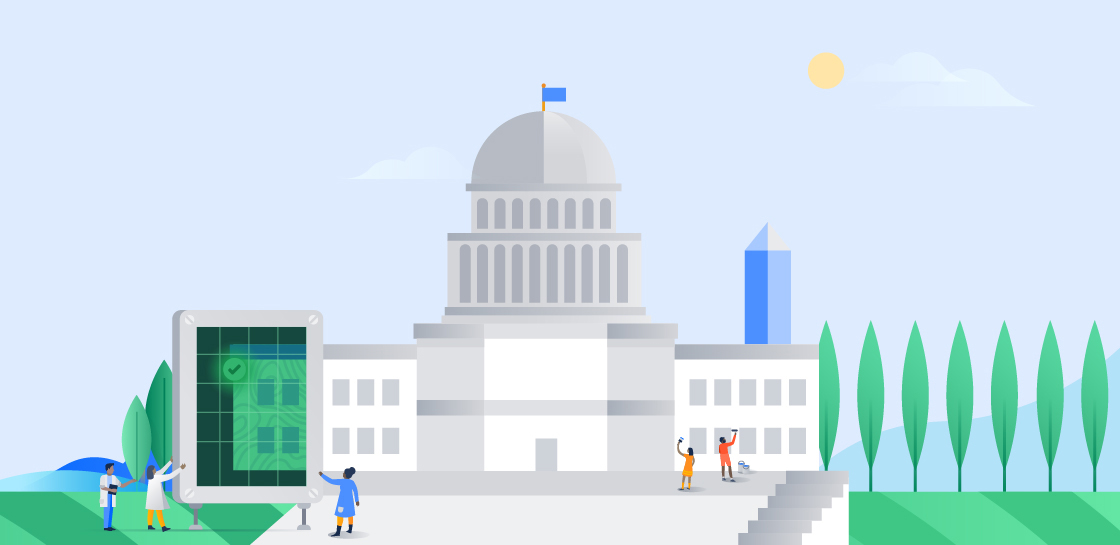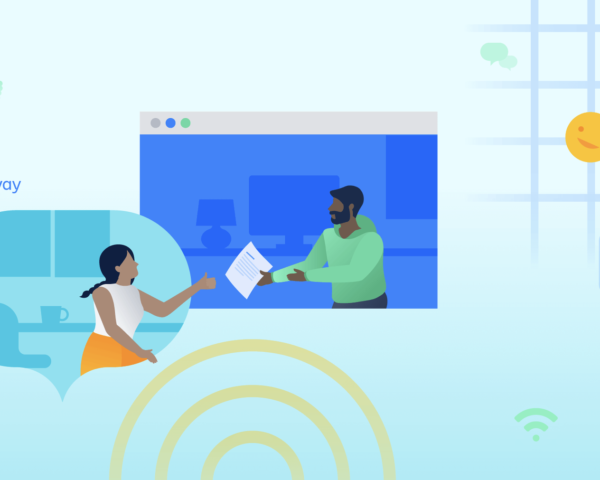How government agencies can accelerate their modernization journey
Three modernization challenges government agencies face, and how to overcome them.

Modernization has always been an ongoing goal for government agencies. With decades of investment in legacy systems, constrained public sector funding, and ever-changing priorities, agencies have been forced to rely on existing systems rather than jumpstart the complex and costly process of modernization. That is, until COVID-19. The pandemic created an unprecedented demand for critical government services to deal with the effects of a global healthcare crisis, recession-level unemployment, and the shift to a nationwide remote workforce. And for the first time in decades, modernization moved to the top of every agency’s prioritization list, with each agency rethinking how they could use technology, people, and processes to fundamentally shift the way work is done and achieve success in the modern world.
Three challenges government agencies face
At the forefront of this transition are three main pillars: collaboration in a remote world, security and compliance, and performance and scalability. Embracing these levers of change is not only a requirement for life post-pandemic, but also necessary to address the rising expectations of constituents for government programs to offer the same speed, security, and usability as any smartphone app.
Powering collaboration in a remote world
The past year has brought a sudden and unprecedented change to the way we all communicate and collaborate. For the first time in history, government agencies were tasked with managing an agency-wide transition to remote work, while also dealing with a once-in-a-lifetime pandemic and not being able to miss a beat in the process. As each agency scrambled to meet the surge in demand, there were siloed efforts to make adjustments to accommodate the necessary but dramatic shift to remote work. But what we’ve learned is that to truly thrive in this new environment, stakeholders must go beyond the “lift and shift” model, where work continues as usual, but remotely. Rather, government agencies must reimagine how teams do their work and embrace technology that empowers collaboration, makes work visible, and automates processes.
By choosing software that enables all of those practices, government agencies can address concerns around productivity and bolster agency and program collaboration. Teams that traditionally haven’t had direct lines of communication but have seen value in working collaboratively during the pandemic can use modern software to build new frameworks and best practices for communication. When using the right software, teams are collaborating in lockstep, work in progress is visible to everyone, and handoffs across agencies and programs can be streamlined and maintained in a secure database. Collaboration software can also offer better accountability at all levels of the organization. Leaders have a full scope of the work being accomplished by their teams, can provide guidance, and have the opportunity to move projects along if needed. The right tools can also enable individual contributors to see their work within the context of their larger organizational goals, giving everyone a sense of visibility and the impact of their contributions.
Tip
The shift to remote work is not just centered on technology, but technology and culture. To build better collaboration across a hybrid workforce, consider one of the eight plays for remote teams in Atlassian’s Team Playbook.
Integrating security and compliance every step of the way
As organizations continue to tackle the realities of remote work, one that stands out for most is the impact on security and compliance. For years, the government has emphasized a security approach that was focused on a zero-trust approach to identity management, protecting the perimeter, but with the shift to remote work comes a new wave of potential vulnerabilities that have yet to be identified. That, paired with breaches like SolarWinds, emphasizes the need for modernization in the realm of security to go beyond the software that each team uses, but that requires the culture of development teams to change.
Enter DevSecOps
Specifically, this means embracing DevSecOps, a framework that embeds security into all facets of software development, including continuous integration, delivery, and deployment.
With a DevSecOps framework in place, organizations take a proactive approach to security, such that when a developer submits code, the code gets absorbed into the security process, tested, and approved before it ever hits production. This process elevates the development process and can bring enormous value to legacy modernization efforts that were built using waterfall methodologies and that may not be regularly scanned for vulnerabilities.
Tip
DevSecOps is a journey, not a destination, and requires software teams to embrace a new culture and ways of working together. It’s also reliant on good tooling that can easily scale across an organization. To learn more about DevOps, SecOps, and DevSecOps, check out our white paper.
Addressing the move to cloud
One of the major learnings emerging from the pandemic is the relationship between modernization and resilience. Legacy systems that weren’t prepared for normal government functions failed to meet the surge in demand caused by COVID-19, forcing government agencies to recognize the value of newer technologies that could quickly respond to the scale of new requests and maintain application performance that constituents were accustomed to. As Rep. Gerry Connolly, D-VA, explained, “Despite urgent congressional action to provide unprecedented levels of economic assistance, those in need have had their misery exacerbated by a broken IT infrastructure that has prevented them from receiving timely support.” Enter cloud computing, which can offer the scalability and performance traditional hosting methods can’t.
Tip
There are two types of commonly offered cloud services:
1. Software as a service (SaaS): A service model in which a customer buys a subscription to the vendor’s software application and the software is made available to the customer’s users over the internet (examples of this include Adobe Creative Cloud, Salesforce, and Atlassian cloud)
2. Infrastructure as a service (Iaas): A cloud computing infrastructure that provides compute, network, and storage resources over the internet via a subscription model that can scale (examples of this are Amazon Web Services and Microsoft Azure)
And while migrating decades of legacy systems to the cloud can feel like a daunting task, there are multiple ways to embark on this journey. Some organizations choose to migrate all their systems at once, while others choose a gradual approach with hybrid environments across SaaS, IaaS, and on-premise environments to support their software stack.
More often than not, large organizations choose a phased approach so they can take advantage of the benefits of cloud in some areas while maintaining the necessary control in others. This enables government agencies to mitigate some of their security concerns by moving to the cloud in stages, allowing smaller or more autonomous teams to lead the charge.
Tip
Atlassian offers both cloud computing options as well as a hybrid option, for our enterprise customers. To learn more about how to approach cloud migration for your enterprise, check out this blog.
The journey of modernization is not an easy one but, as the last year has taught us, legacy systems can no longer support the needs of a modern workforce. Remote and hybrid work is here to stay and government agencies will have to continue to evolve to meet the needs of this new environment. Get started by exploring how Atlassian’s self-managed offering can help.Remote and hybrid work are here to stay, and for government agencies to be successful they need a proven, secure, and scalable solution that can support their modernization efforts. To learn how Atlassian can help, explore our self-managed offering.



